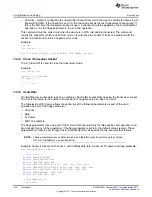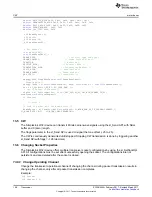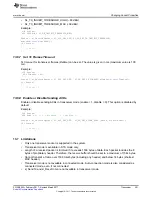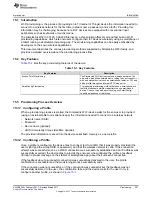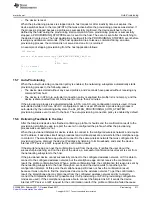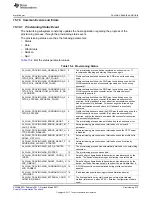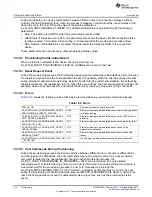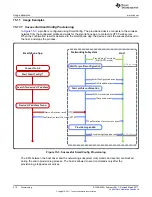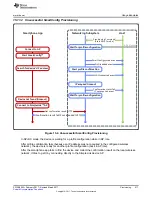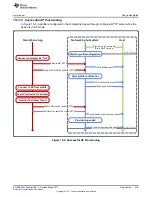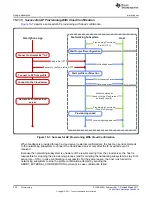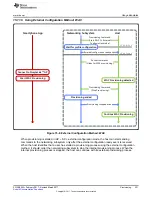
Introduction
207
SWRU455A – February 2017 – Revised March 2017
Copyright © 2017, Texas Instruments Incorporated
Provisioning
15.1 Introduction
Wi-Fi provisioning is the process of providing an IoT (Internet of Things) device the information needed to
connect to a wireless network for the first time (network name, password, and so forth). Providing this
information may be challenging, because not all IoT devices are equipped with conventional input
peripherals such as keyboards or touchscreens.
The SimpleLink Wi-Fi CC3120, CC3220 Internet-on-a chip solution offers smart and fast built-in Wi-Fi
provisioning capabilities, which lets end-users configure their IoT devices wirelessly using a smartphone or
a tablet running a dedicated provisioning app. The provisioning capabilities can be easily embedded by
developers on their own wireless applications.
This document describes the various provisioning methods supported by SimpleLink Wi-Fi family, and
provides a detailed overview about the provisioning process flow.
15.2 Key Features
lists the key provisioning features of the device.
Table 15-1. Key Features
Key Features
Description
Access-Point Provisioning
The SimpleLink Wi-Fi device creates a wireless network of its
own with a predefined network name, letting the user connect it
with an external device (such as smartphone, tablet, or PC) and
add a profile through the internal HTTP web server.
SmartConfig Provisioning
TI proprietary provisioning method that uses a smartphone or a
tablet to broadcast network credentials to an unprovisioned
device. The user can add a profile using any SmartConfig-
capable smartphone or tablet app.
15.3 Provisioning Process Overview
15.3.1 Configuring a Profile
When a provisioning process is started, the SimpleLink Wi-Fi device waits for the end-user to provide it
(using an external tablet or smartphone app) the information needed to connect to a wireless network:
•
Network name (SSID)
•
Password
•
Device name (optional)
•
UUID (Universally Unique Identifier; optional)
The provided information is saved into the device serial flash memory as a new profile.
15.3.2 Confirming a Profile
Once a profile is configured, the device tries to connect to it to confirm that it was properly provided (the
user might type the wrong SSID or password), and that the wireless network is valid. If the connection
attempt was successful (such as a WLAN connection was successfully established and an IP address was
successfully acquired), the device tries to provide the end-user who configured the profile a feedback
(through a proper message on their tablet or smartphone app) about the successful connection.
If the feedback about a successful connection was successfully delivered to the user, the profile
confirmation is successful and the provisioning process successfully ends.
If the connection was not successful, or if the connection was successful but the feedback was not
successfully delivered to the user, the confirmation fails, and the device waits for the user to try to
configure another profile, as shown in
.




